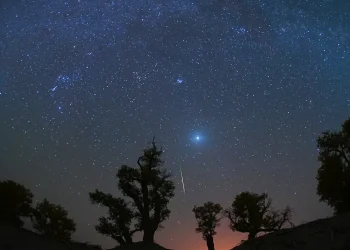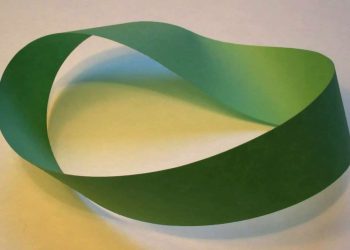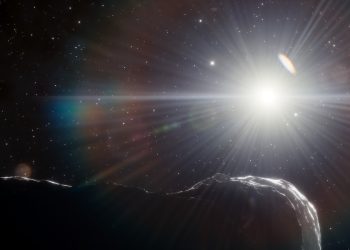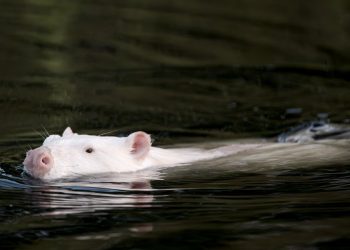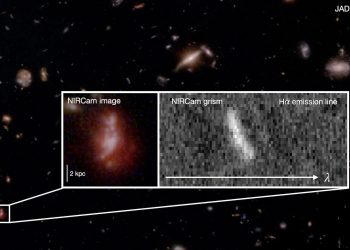The Europa Clipper spacecraft could soon be hit by charged particles – particles ripped from the ion tail coming from the interstellar comet 3I/ATLAS.
This is the new prediction from two European researchers whose computer code allows them to identify when a spacecraft can align with a cometthe tail and the sun. Completely harmless to the spacecraft, the event provides a rare and fortuitous alignment – and a unique opportunity to directly sample material from a comet located beyond our region of the cosmos.
“We have virtually no data on the interiors of interstellar comets and on star systems that formed them,” Samuel Grant of the Finnish Meteorological Institute, who led the research, told Space.com. “Sampling the tail in this way is the closest we can currently get to a direct sample of such an object, and therefore a different part of the object. galaxy“.
Despite this huge opportunity, however, there are a number of things that could harm Europe Clipper detection of charged particles from 3I/ATLAS. For example, the US government shutdown persists. This is a problem because Europa Clipper is currently in cruise mode as it continues its journey towards Jupiter and all its instruments are not activated. The alignment between Europa Clipper, the comet and the sun comes into place between October 30 and November 6, and if the shutdown is not resolved by then, it is unclear whether scientists can wake up Europa Clipper to make the measurements even if they want to.
If the measurements can be made, they will provide insight into the composition of the interstellar comet, allowing comparisons with comets from our own planet. solar system.
Comet Anatomy
Comets have two tails formed from particles and dust kicked up from a comet’s surface or outgassed due to increasing temperatures on the comet as it gets closer to the sun. The heat causes pockets of gas just below the surface to expand and burst.
A comet’s dust tail is the most prominent and follows the path of the comet. No spacecraft is currently able to fly over 3I/ATLAS’ dust off the tail and sample it.
The ion tail, however, is another matter.
“We study cometary bodies because they act like time capsules, sealing away matter from their formation billions of years ago,” Grant said. “This material is ejected as it approaches the sun, some of which is carried away from the sun by the solar wind to form the ion tail.”
Because he is motivated by solar windwhich radiates from the sun, the ionic tail always points away from the sun.
Between October 30 and November 6, Europa Clipper will be able to potentially receive some of these ions transported by the solar wind to the spacecraft at several hundred kilometers per second.
Alongside Grant, Geraint Jones – of the European Space Agency and principal investigator of the Comet Interceptor mission – was able to predict the crossing of the ion tail using their Tailcatcher program, a computer code that can track the movements of packets of material from the solar wind.
“We use the velocity measured upon arrival (of a packet) to trace the path it took to get from the sun to the spacecraft, and we can compare that path to the position of the comet,” Grant said.
Their calculations indicate that Europa Clipper could intercept some of the solar wind packets close enough to the comet to steal some of the ions from its ion tail.
The solar wind carries its own ions from the sun, so how can scientists tell the difference between ions from the solar wind and ions stolen from the comet?
“Cometary ions can be distinguished in several ways, most simply by their chemical abundance – cometary ions include significant amounts of heavier species, particularly water group ions, compared to cometary ions. proton and helium-dominated solar wind,” Grant said. “Additionally, loading additional mass into the solar wind causes a general slowing and deviation of the ambient solar wind flow.”
Probability of a rain of particles
Successful detection also relies on properties intrinsic to the solar wind. First, the solar wind must flow in the right direction; although it always flows from the sun, it is not always perfectly radial and sometimes it can flow at an angle, in which case it may miss Europa Clipper.
The wind also needs to be strong enough at the right time to be able to transport the heavier ions to Europa Clipper. The comet is at perihelion – its closest point to the sun – on October 29, when it will be 126 million miles (200 million kilometers) away, within the orbit of March. Meanwhile, Europa Clipper is currently more than 186 million miles (300 million kilometers) from the sun after completing a flyby of Mars earlier this year.
On the positive side, as 3I/ATLAS gets closer to the sun, activity on the comet will continue to intensify. If this trend continues, then, at perihelion, the ion tail will be largest, increasing the chances that Europa Clipper will be able to detect some of its ions.
The European Space Agency’s Hera spacecraft, en route to the twin asteroid system of Didyma and Dimorphos, will also be able to intercept solar wind packets carrying cometary ions between October 25 and November 1. However, Hera has no instruments to measure charged particles and the magnetic field of the solar wind. Europa Clipper does this, since part of its mission is to study Jupiter’s magnetic and radiative environment and its impact on Europe.
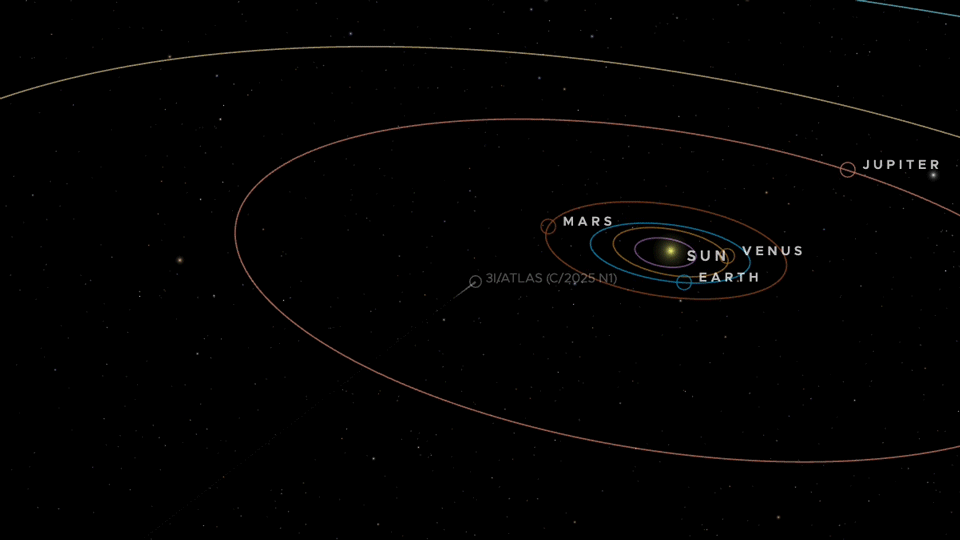
Yet neither Grant nor Jones are members of the Europa Clipper team and therefore have no say in whether or not the team does the measurements.
But even if Europa Clipper is missing this time, Tailcatcher has already been used successfully to predict ion tail crossings, such as when the European Space Agency Solar Orbiter the spacecraft detected ions from comet C/2019 Y4 in 2020. Its history of successful predictions means it will undoubtedly be able to identify tail crossovers in the future – perhaps even for the next interstellar comet, whenever it comes along.
Indeed, the possibility of tail crossings adds an additional dimension to the study of comets. In 2029, the European Space Agency will launch the Comet Interceptor mission, which will remain parked in space until scientists identify a comet worthy of the spacecraft visiting. Interstellar comets are high on the list.
“The primary goal of Comet Interceptor is to fly close enough to an interstellar or long-period comet to be able to directly sample the coma and its tail head,” said Grant, who is not a member of the Interceptor team. “It would be an incredible opportunity if another spacecraft were able to cross upstream of the tail at the same time.”
Grant and Jones’ prediction of ion tail crossover is reported in a preprint published on arxiv deposit of pre-printed paper.



